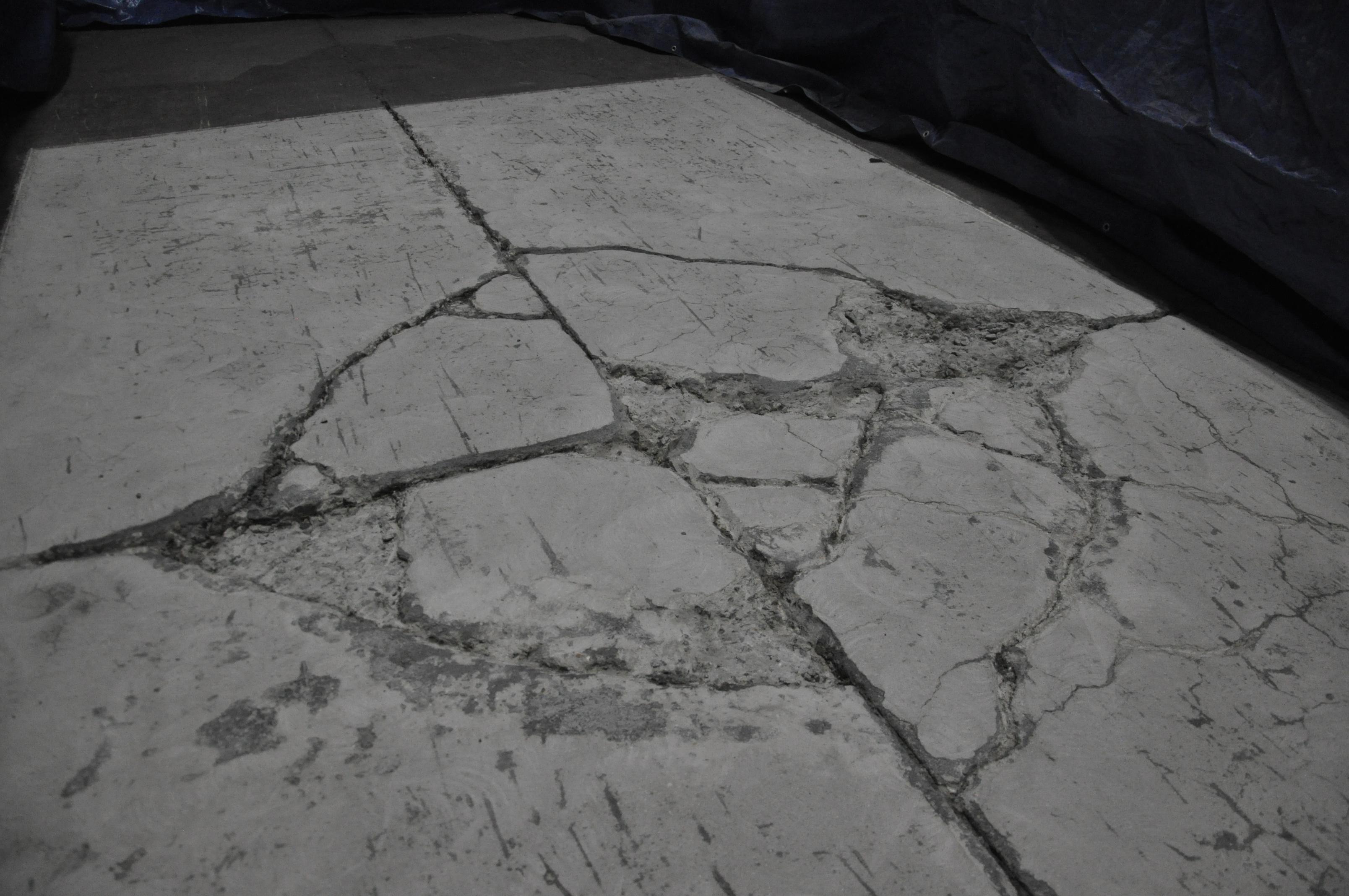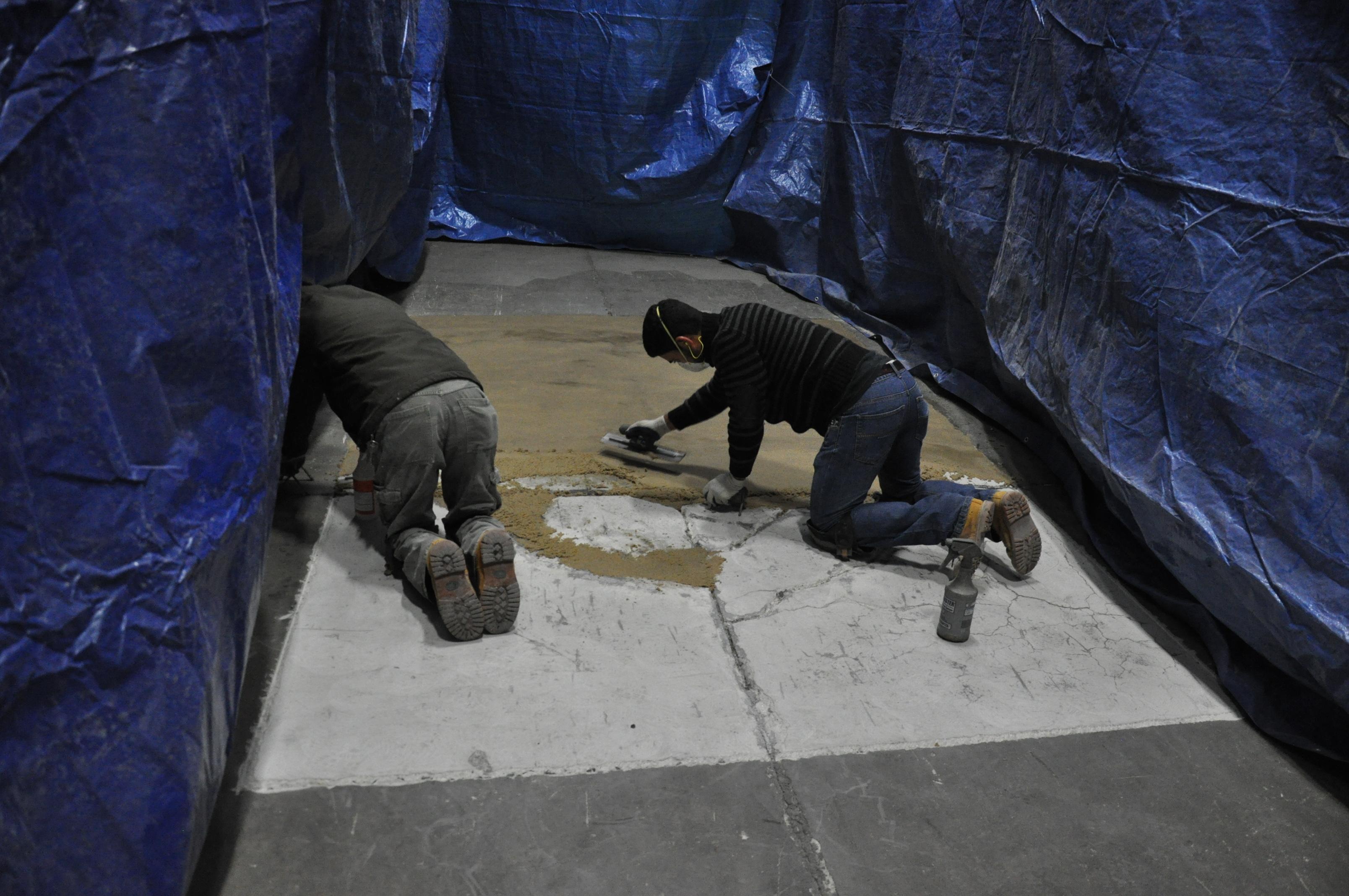The Challenge of Cold-Temperature Concrete Repair
Introduction
Repairing concrete floor cracks in cold storage areas, walk-in freezers, or refrigerated spaces presents unique challenges that typical repair solutions aren’t equipped to handle. In these low-temperature environments, standard concrete crack fillers for freezer floors often fail because they require the surface to be brought up to ambient temperature before application. This process involves shutting down the cooling system, warming the slab (often with heaters or thermal blankets) and waiting for it to reach the required temperature range.
Not only does this method increase labor and equipment costs, but it also leads to costly downtime in refrigerated warehouses, especially in facilities handling perishable goods. In many cases, shutting down a freezer or cold storage unit for even a few hours can disrupt inventory, affect product quality, and impact operational timelines.
How to Repair Floor Cracks in Low-Temperature Areas
Additionally, repairing structural cracks in concrete floors inside commercial freezers requires materials that can cure properly at subzero temperatures. Traditional epoxies and cementitious patching compounds are not designed for cold room floor repairs, as they become brittle, fail to adhere, or take too long to set.
To minimize disruption, many facility managers are now turning to fast-curing, low-temperature concrete crack repair products for cold storage environments. These specialty materials are engineered to bond to cold or even icy surfaces, often curing in minutes at temperatures as low as -20°F (-29°C). This allows repairs to be completed without shutting down the freezer or moving inventory, keeping operations running smoothly.

What is the Best Cold Weather Concrete Repair Product?
Whether you’re managing a food processing facility, pharmaceutical cold storage, or a grocery distribution center, choosing the right cold-temperature concrete crack filler for walk-in freezers is essential for safety, compliance, and operational efficiency.
Arctic Freezite™ Below-Freezing Epoxy Mortar is the ideal solution for cold storage concrete repairs.
The Arctic Freezite™ Advantage
When the facility manager at Howes Oil Company needed to seal cracks in a convenience store cooler floor, they chose Arctic Freezite™ Below-Freezing Epoxy Mortar. The results?
“It worked great without having to change the temperature at all. Very satisfied customer.”

Works in Temperatures as Low as -20°F
Arctic Freezite™ is specially engineered to cure in extreme cold, down to -10°F, without the need to shut down refrigeration. This industrial-grade epoxy mortar bonds securely to concrete, delivering a durable, chemical-resistant finish that withstands heavy foot traffic, pallet jacks, and daily cleaning.
Fast, Durable, and Hassle-Free
Its rapid-set formula means you can return to service in just hours, not days. No heaters, no thawing. Simply mix, apply, and let it cure.
Perfect for Any Cold Environment
From grocery stores and restaurants to food processing plants and cold storage warehouses, Arctic Freezite™ makes below-freezing floor crack repairs quick and effective.
Seal floor cracks in cold environments without costly downtime, choose Arctic Freezite™ for lasting results.
FAQS for Cold Storage Concrete RepairFAQ 1: Can I repair uneven or sunken freezer floors while the freezer is running?
Yes. Many cold-temperature repair materials are designed to cure at subzero temperatures (as low as –20°F / –29°C) without shutting down your refrigeration system. This allows facility managers to fix trip hazards, joint spalling, or sunken slabs in walk-in freezers or cold warehouses without costly downtime or moving inventory.
FAQ 2: What’s the best way to fix broken concrete at cold storage door thresholds?
Freezer door thresholds are high-impact zones that commonly crack or spall due to constant traffic and thermal cycling. The best fix is to saw cut and remove damaged concrete, then install a low-temperature repair mortar or fast-curing epoxy specifically rated for freezer use. Reinforcement with metal nosings or armored edge protectors is often recommended to extend durability in these high-traffic transition zones.
FAQ 3: How fast will repairs cure in cold storage, and when can I resume traffic?
Most professional-grade cold storage repair compounds cure rapidly—even at subzero temps. Some allow foot traffic within 30 minutes and forklift traffic within 1–2 hours, depending on the product and temperature. Quick return-to-service is a major benefit of using materials engineered for cold environments.
FAQ 4: Will cold-storage floor repairs hold up long term?
Absolutely, when done properly. Using materials rated for thermal shock, freeze-thaw durability, and heavy load resistance, these repairs can last years under forklift traffic and extreme cold. Longevity depends on proper surface prep, material selection, and installation technique, especially in areas with recurring moisture or movement.
Read More About Concrete Floor Repair in Refrgerated Environments:
The Best Epoxy Mortar Patch for Low Temperatures - Garon Products Inc
Cold Climate Floor Coatings: Keeping Surfaces Durable & Safe - Garon Products Inc
Blast Freezer Floors: Urethane Cement Resurfacer - Garon Products Inc
Still having trouble deciding which concrete repair products are right for your project? Contact our team today.
